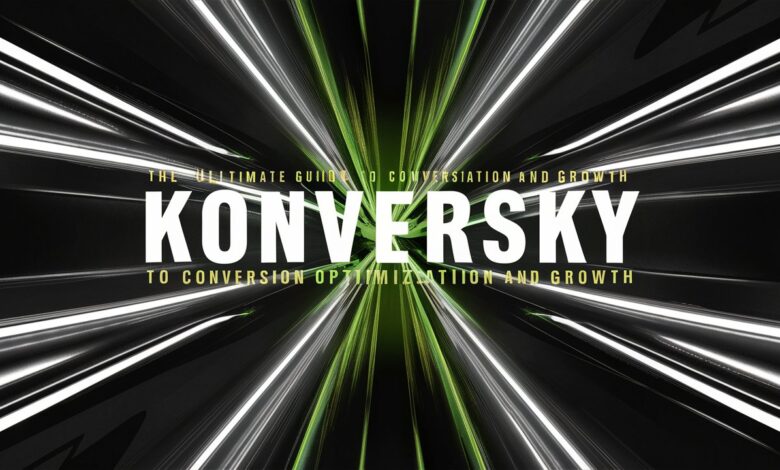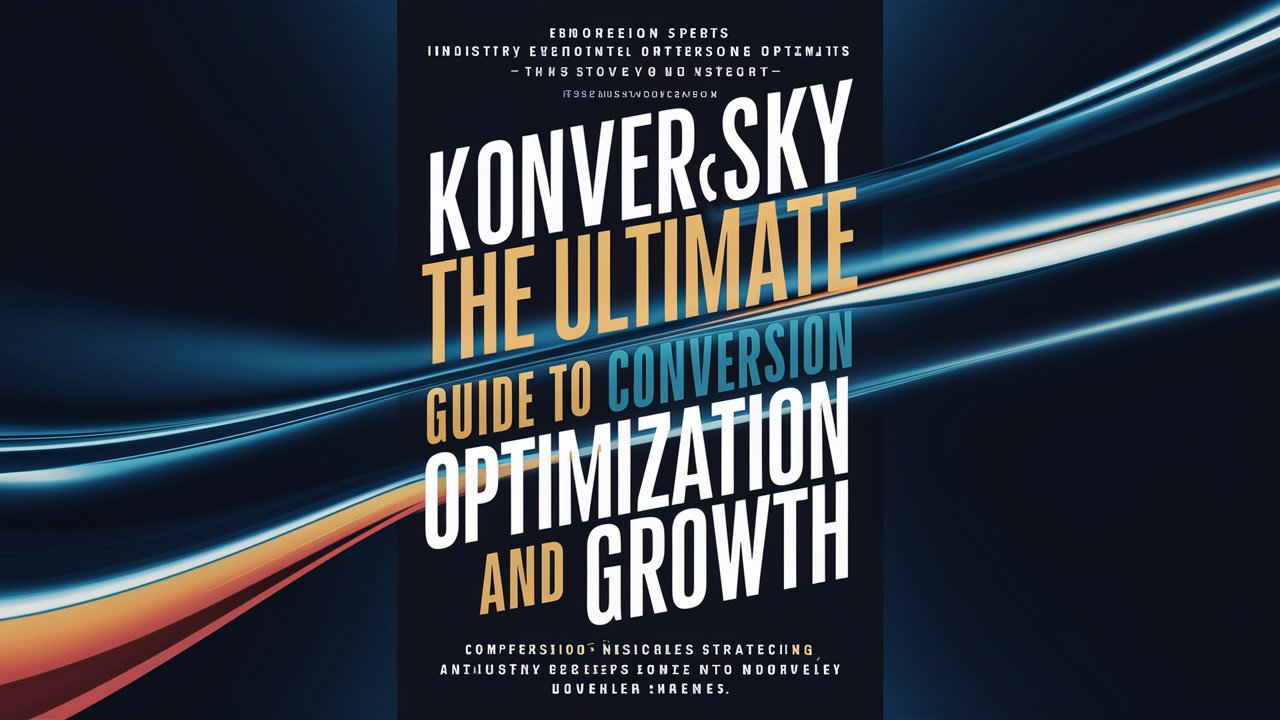Konversky: The Ultimate Guide to Conversion Optimization and Growth

In today’s fast-paced digital world, Konversky has emerged as a key concept for businesses striving to turn website visitors into loyal customers. The art and science behind Konversky focus on improving conversion rates, optimizing customer journeys, and maximizing ROI (Return on Investment) through intelligent marketing and analytics. This comprehensive guide explores every aspect of Konversky, its strategies, implementation methods, and tools that help businesses achieve exponential growth.
What is Konversky? Understanding the Core Concept
Konversky refers to a holistic approach to conversion optimization, where businesses use data-driven strategies to turn online traffic into meaningful actions such as purchases, sign-ups, or inquiries. The essence of Konversky lies in understanding user behavior, improving user experience (UX), and refining marketing funnels to achieve higher conversion rates. By leveraging analytics, A/B testing, and personalized content, companies can significantly boost engagement and revenue.
The Importance of Konversky in Modern Digital Marketing
In the era of digital transformation, simply driving traffic to a website is no longer enough. Konversky strategies ensure that every click, view, or impression contributes to business goals. This approach is essential for brands looking to enhance customer retention, reduce bounce rates, and improve sales efficiency. Konversky empowers marketers to make informed decisions backed by data, resulting in better resource allocation and measurable growth.
A well-implemented Konversky strategy also enables continuous improvement. By analyzing conversion metrics, identifying bottlenecks, and testing new ideas, companies stay ahead of competitors and align their efforts with evolving market trends.
Key Components of an Effective Konversky Strategy
To master Konversky, businesses must focus on several critical elements that shape conversion success:
1. Data Analytics and Insights
Every Konversky initiative begins with comprehensive data analysis. Understanding user demographics, traffic sources, and on-site behavior reveals hidden opportunities. Using tools like Google Analytics, Hotjar, and Mixpanel, marketers can identify pain points, optimize funnels, and track performance metrics such as CTR (Click-Through Rate), CRO (Conversion Rate Optimization), and Customer Lifetime Value (CLV).
2. User Experience (UX) Optimization
A seamless and intuitive user experience is at the heart of Konversky. From page loading speed to mobile responsiveness and navigation design, every detail matters. UX optimization ensures users enjoy their journey, making them more likely to complete desired actions. Incorporating clear CTAs (Call-to-Actions), engaging visuals, and concise messaging enhances overall usability.
3. A/B Testing and Experimentation
Konversky thrives on experimentation. A/B testing allows marketers to compare different versions of a webpage, email, or landing page to determine which performs better. By systematically testing headlines, colors, button placements, and layouts, businesses can make informed decisions and achieve continuous improvement.
4. Personalization and Segmentation
Personalized experiences create deeper connections with audiences. Konversky emphasizes segmentation, enabling brands to deliver tailored messages based on user preferences, behavior, and demographics. Personalized offers, dynamic content, and AI-driven recommendations lead to higher engagement and conversion rates.
5. Conversion Funnel Optimization
An optimized conversion funnel is a key pillar of Konversky. Each stage—from awareness and consideration to decision and loyalty—must be refined to eliminate friction. By aligning content, messaging, and offers with user intent, businesses can move prospects smoothly through the funnel, ultimately boosting conversions.
Implementing Konversky: Step-by-Step Framework
Creating a robust Konversky framework requires a strategic approach. Here’s how to implement it effectively:
Step 1: Conduct a Comprehensive Audit
Begin by analyzing your current website performance. Identify key metrics such as bounce rate, session duration, and conversion paths. Determine where users drop off and which pages drive the most value.
Step 2: Define Clear Goals and KPIs
Set specific, measurable, achievable, relevant, and time-bound (SMART) goals. Whether it’s increasing sign-ups, boosting sales, or improving lead quality, defining KPIs (Key Performance Indicators) ensures clarity and direction.
Step 3: Develop Hypotheses and Test
Based on insights, create hypotheses about what changes might improve conversions. Implement A/B tests, monitor results, and make data-backed adjustments.
Step 4: Optimize User Journey
Map the customer journey from first interaction to final conversion. Remove friction points, enhance CTAs, and ensure consistency across all touchpoints.
Step 5: Monitor and Iterate
Konversky is an ongoing process. Continuously monitor performance, analyze results, and iterate based on findings to maintain sustainable growth.

Tools and Technologies for Konversky Success
Leveraging the right tools and technologies is crucial for executing a successful Konversky strategy. Some of the most effective tools include:
-
Google Optimize – for A/B testing and personalization
-
Hotjar – for heatmaps and behavior analysis
-
Optimizely – for experimentation and testing
-
HubSpot – for marketing automation and analytics
-
Crazy Egg – for click tracking and UX improvement
-
Unbounce – for creating high-converting landing pages
Integrating these tools into your workflow enhances decision-making and helps refine every aspect of your conversion strategy.
Benefits of Adopting a Konversky Approach
Implementing Konversky offers numerous advantages for businesses across industries:
-
Higher Conversion Rates: Turning more visitors into customers through data-driven improvements
-
Improved ROI: Maximizing returns from marketing investments
-
Better Customer Insights: Understanding behavior and preferences for targeted engagement
-
Reduced Acquisition Costs: Converting existing traffic more effectively
-
Enhanced Brand Loyalty: Delivering personalized experiences that foster long-term relationships
By prioritizing Konversky, businesses not only achieve short-term wins but also build a sustainable foundation for future success.
Common Mistakes to Avoid in Konversky
While optimizing for conversions, businesses often fall into common pitfalls. Avoid these to ensure maximum efficiency:
-
Ignoring data insights and relying on assumptions
-
Neglecting mobile optimization
-
Overcomplicating forms and checkout processes
-
Failing to test new ideas consistently
-
Overlooking post-conversion engagement
A well-rounded Konversky strategy focuses on continuous improvement, ensuring that each step of the customer journey adds measurable value.
Conclusion: Driving Growth with Konversky
In an increasingly competitive digital landscape, Konversky is more than a buzzword—it’s a necessity. By integrating data-driven insights, enhancing user experiences, and fostering personalization, businesses can transform website visitors into loyal customers. A strong Konversky framework ensures that every marketing effort contributes directly to growth and profitability. The key to success lies in continuous testing, learning, and adapting to evolving customer expectations.
Frequently Asked Questions (FAQ)
1. What is Konversky?
Konversky is a comprehensive approach to conversion rate optimization (CRO) that focuses on turning website visitors into customers through data-driven strategies.
2. Why is Konversky important?
It helps businesses maximize ROI, improve user experience, and increase overall conversions by optimizing every stage of the customer journey.
3. What tools are best for Konversky?
Tools like Google Optimize, Hotjar, Optimizely, and HubSpot are ideal for testing, analytics, and optimization.
4. How can I start with Konversky?
Begin with a website audit, set clear goals, run A/B tests, optimize UX, and continuously monitor results to refine strategies.
5. Does Konversky work for all industries?
Yes, Konversky principles apply to any business that relies on digital conversions, regardless of industry.



